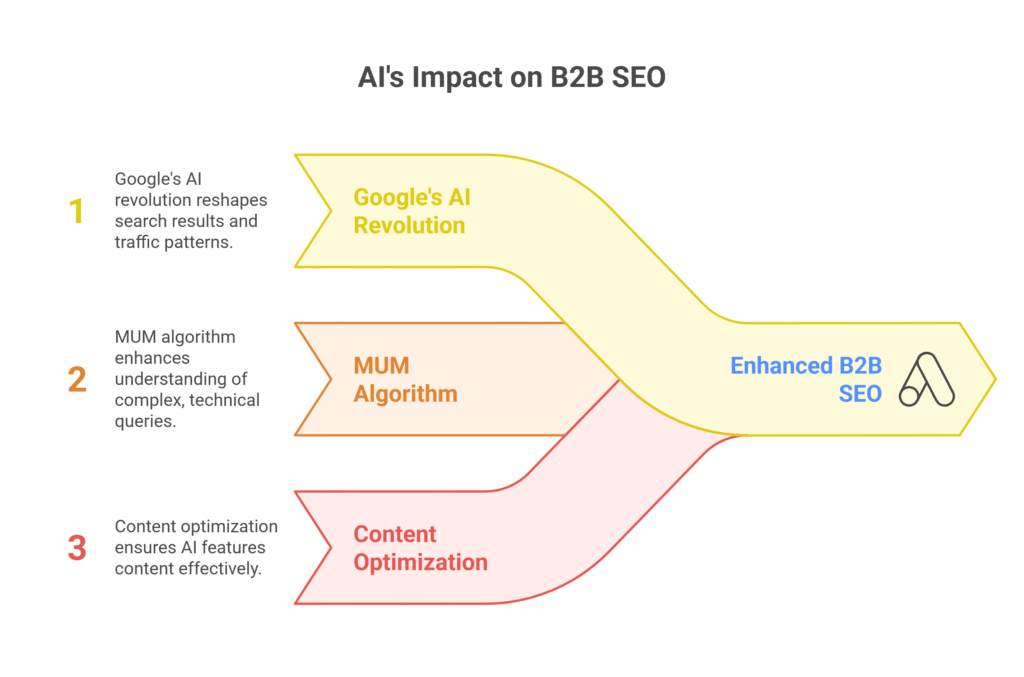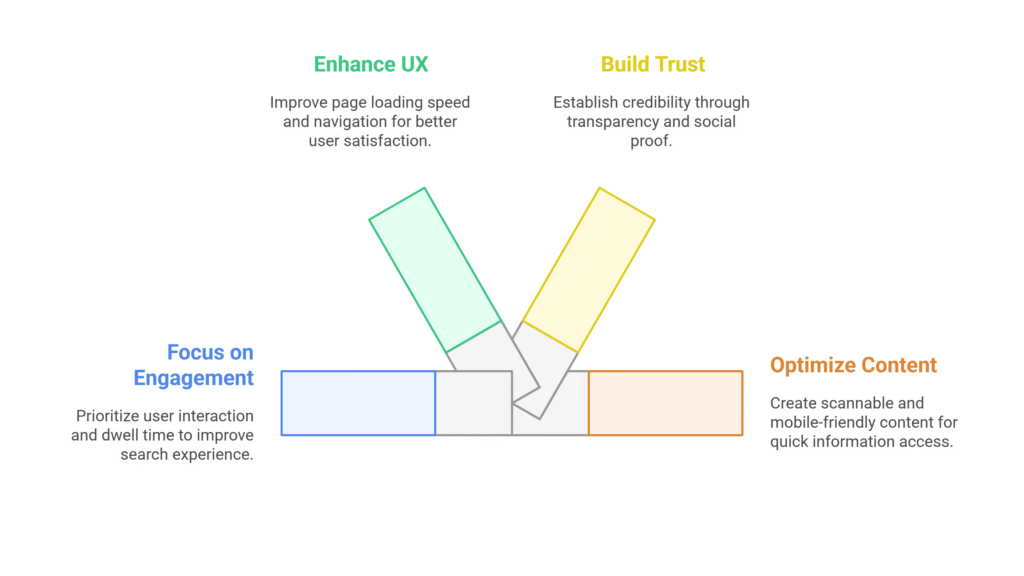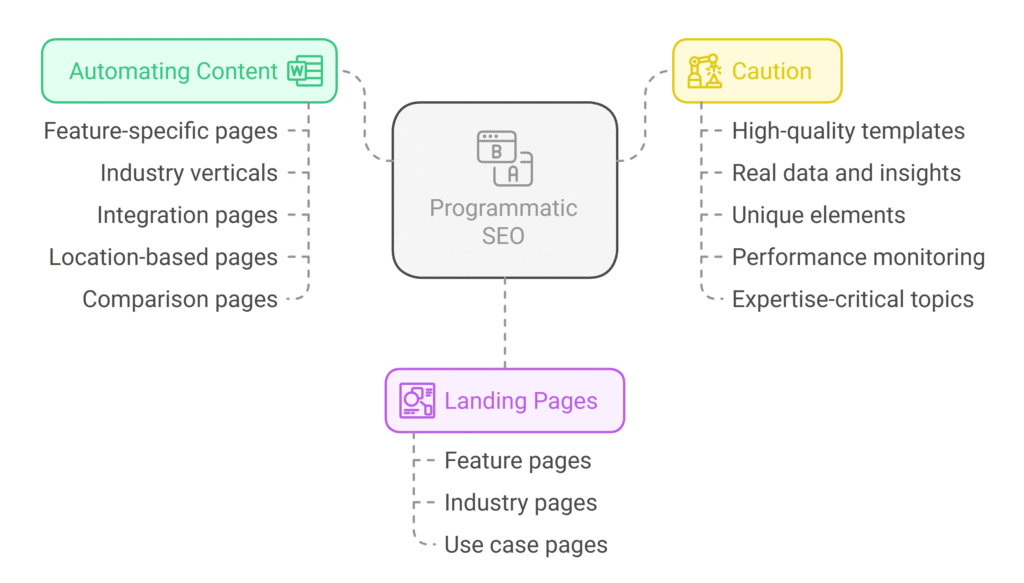B2B SEO is changing faster than ever.
The old playbook? It’s basically useless now.
You know the one I’m talking about: Find keywords. Write content. Build links. Wait for rankings.
That approach worked great in 2019. In 2025? It’s a recipe for mediocrity.
Here’s the reality: B2B buyers are smarter, more informed, and harder to reach than ever before. And Google’s AI is rewriting the rules of search every single day.
But here’s the good news:
The companies that understand these changes and adapt quickly will dominate their competition for years to come.
Today, I’m going to show you exactly what’s changing in B2B SEO, what’s working right now, and how to build a future-proof SEO strategy that drives real revenue.
Let’s dive in.
How the B2B Buyer Journey Has Completely Evolved
Remember when B2B buyers would call your sales team after reading one blog post?
Those days are long gone.
Today’s B2B buyer journey looks completely different:
The New Reality: Research-Heavy, Committee-Driven Decisions
B2B buyers now complete 70% of their research before ever contacting sales, according to recent studies. But it gets even more complex than that.
The average B2B purchase now involves:
- 6-10 decision-makers (up from 3-5 just five years ago)
- 12+ months of research for complex solutions
- 57 different touchpoints across multiple channels before making a decision
This isn’t just a slight shift. It’s a complete transformation of how B2B buyers behave.
What This Means for Your SEO Strategy
Your content can’t just answer one question anymore. It needs to address the entire buyer journey for multiple stakeholders.
Think about it: Your CEO needs different information than your IT director. Your procurement team has different concerns than your end users.
Traditional SEO focused on individual keywords. Future-winning B2B SEO focuses on buyer journey mapping.
The Self-Service Content Revolution
Modern B2B buyers prefer self-service content over talking to salespeople. They want:
- In-depth whitepapers that explain complex technical concepts
- Detailed case studies showing real results from companies like theirs
- Comparison guides that help them evaluate different solutions
- ROI calculators that quantify potential business impact
- Interactive demos they can explore at their own pace
Your SEO strategy needs to prioritize creating this self-service content at scale.
AI’s Role in Shaping B2B SEO

Let me be blunt: AI is turning B2B SEO upside down.
And most companies are completely unprepared for what’s coming.
Google’s AI Revolution: SGE, MUM, and Beyond
Google’s Search Generative Experience (SGE) is now live in over 120 countries. Here’s what that means for B2B SEO:
Traditional search result: 10 blue links
AI-powered search result: One comprehensive AI-generated answer pulled from multiple sources, with links below
The impact? Early data shows that SGE can reduce organic click-through rates by 18-64% depending on the query type.
But here’s the opportunity: The sources that AI pulls from get massive credibility boosts and still receive qualified traffic.
How Google’s MUM Algorithm Changes Everything
MUM (Multitask Unified Model) understands content across:
- Languages (can translate and understand content in 75+ languages)
- Formats (text, images, videos, audio)
- Context (understands complex, multi-part questions)
For B2B SEO, this means Google can now understand incredibly complex technical queries that span multiple topics.
Optimizing Content for AI Summaries
Here’s how to ensure your content gets featured in AI-generated answers:
Structure for Scannability: Use clear headings, bullet points, and numbered lists that AI can easily parse.
Answer Questions Directly: Start sections with clear, concise answers before diving into details.
Use Semantic Markup: Implement schema markup to help AI understand your content structure.
Create Comprehensive Resources: AI favors content that thoroughly covers a topic from multiple angles.
Include Data and Statistics: AI loves citing specific numbers and research findings.
Topic Clusters and Semantic SEO Now Dominate
Keyword-focused SEO is dead.
Topic-focused SEO is the future.
From Keywords to Intent-Based Topic Architecture
Instead of targeting individual keywords, winning B2B SEO strategies now focus on:
Topic clusters: Comprehensive coverage of related subtopics around a main theme
Search intent matching: Understanding what users really want to accomplish
Semantic relationships: How different concepts connect and support each other
Here’s a real example: Instead of just targeting “marketing automation,” a winning strategy would create topic clusters around:
- Marketing automation strategy
- Implementation and setup
- Integration with existing tools
- ROI measurement and optimization
- Team training and adoption
- Industry-specific use cases
Internal Linking and Topical Authority Are Critical
Google now evaluates websites based on topical authority – how comprehensively and authoritatively you cover specific subjects.
Internal linking strategy:
- Link from broad topics to specific subtopics
- Create “hub” pages that link to all related content
- Use descriptive anchor text that includes semantic keywords
- Build topic clusters that reinforce your expertise
Tools that make this easier:
- Clearscope: Content optimization based on semantic analysis
- Surfer SEO: Topic modeling and content scoring
- Frase: AI-powered content briefs and topic research
The companies winning in B2B SEO aren’t just creating more content. They’re creating more connected, strategically linked content.
Search Experience Optimization (SXO): Beyond Rankings

Rankings don’t matter if users bounce immediately.
The future of B2B SEO is about optimizing the entire search experience, not just getting to position #1.
Not Just Rankings – Focus on Engagement, UX, and Trust
Google’s algorithm now heavily weights user experience signals:
Core Web Vitals: Page loading speed, interactivity, and visual stability
Dwell time: How long users stay on your pages
Bounce rate: Whether users immediately leave or explore further
Trust signals: Author credentials, company information, and social proof
EEAT: Experience, Expertise, Authority, Trust
Google updated their quality guidelines to emphasize EEAT (previously just EAT). Here’s what each element means for B2B:
Experience: Real, first-hand experience with the products/services you’re writing about
Expertise: Deep knowledge demonstrated through comprehensive, accurate content
Authority: Recognition from other experts and industry publications
Trust: Transparency about who you are, clear contact information, and user reviews
Clean Navigation, Fast Pages, Zero-Fluff Content
B2B buyers are busy. They want information fast. Your SEO strategy must prioritize:
Site speed: Pages that load in under 2 seconds Clear navigation: Users should find what they need in 2-3 clicks Scannable content: Bullet points, headings, and visual breaks Mobile optimization: More B2B research happens on mobile than ever before
The Rise of First-Party Data & Intent Signals
Here’s where B2B SEO gets really exciting:
The future isn’t just about attracting random visitors. It’s about attracting the right visitors at the right time.
SEO + Intent Tools = Superpowers
Smart B2B companies are now combining SEO with intent data tools:
Bombora: Shows which companies are researching topics related to your solution Clearbit: Provides company and contact information for website visitors
6sense: Identifies accounts showing buying intent across multiple channels ZoomInfo: Matches website visitors to specific companies and contacts
This combination allows you to:
- Prioritize content creation based on what your target accounts are researching
- Personalize website experiences for high-intent visitors
- Coordinate SEO efforts with sales and marketing campaigns
Aligning SEO with Account-Based Marketing (ABM)
The most successful B2B companies are integrating SEO with ABM strategies:
Content personalization: Create content variations for different target account segments
Geographic targeting: Optimize for search terms used in specific regions where your target accounts are located
Industry-specific optimization: Create content hubs for each vertical you serve
Account-based content: Develop content that addresses the specific challenges of your highest-value prospects
Using CRM Data to Prioritize High-Intent Topics
Your CRM contains goldmine data for SEO strategy:
Analyze won deals: What topics did customers research before buying?
Study lost opportunities: What information gaps led to lost deals?
Track content consumption: Which pieces of content correlate with pipeline progression?
Identify common questions: What do prospects ask most frequently?
This data should drive your content calendar and SEO priorities.
The Power of Thought Leadership Content
Google rewards authority AND uniqueness.
Generic, me-too content doesn’t cut it anymore.
Google Rewards Authority AND Uniqueness
The algorithm now heavily favors content that offers unique insights, original research, and expert perspectives that can’t be found elsewhere.
This means:
- Original research and data studies rank higher than regurgitated industry statistics
- Founder and executive insights carry more weight than generic expert quotes
- Company-specific methodologies outperform generic best practices
- Contrarian viewpoints (when well-supported) often outrank conventional wisdom
Integrate Founder Insights, Data Studies, Expert Quotes
Here’s how to create content that Google and users value:
Founder content: Have your executives share their unique perspectives on industry trends
Original research: Conduct surveys, analyze your customer data, and publish findings
Expert interviews: Feature insights from industry leaders and customers
Case study deep-dives: Go beyond surface-level results to show detailed methodologies
Behind-the-scenes content: Share your company’s internal processes and lessons learned
Future Content = Part Blog, Part Insight Engine
The most successful B2B content in 2025 will function as both educational resources and insight engines:
- Interactive calculators that provide personalized insights
- Assessment tools that benchmark users against industry standards
- Data visualizations that make complex information digestible
- Scenario planners that help users model different approaches
- Resource libraries that curate the best external content alongside your own
Programmatic SEO for B2B Niches

Manual content creation can’t keep up with the long-tail opportunity in B2B.
That’s where programmatic SEO comes in.
Automating Content for Scalable Long-Tail Keywords
Programmatic SEO allows you to create hundreds or thousands of pages automatically by combining templates with data.
For B2B companies, this typically means:
Feature-specific landing pages: Create pages for every feature + use case combination
Industry verticals: Generate pages for each feature across different industries
Integration pages: Build pages for every possible software integration
Location-based pages: Create local versions for different geographic markets
Comparison pages: Generate comparison content for your solution vs every competitor
Landing Pages for Features, Industries, and Use Cases
Here’s a real example of how programmatic SEO works for B2B:
A marketing automation company might create:
- 50 feature pages (email marketing, lead scoring, etc.)
- 20 industry pages (healthcare, SaaS, manufacturing, etc.)
- 30 use case pages (lead nurturing, customer onboarding, etc.)
This creates 50 × 20 × 30 = 30,000 potential page combinations, each targeting specific long-tail keywords.
Caution: Balance Automation with Quality
The biggest mistake with programmatic SEO is prioritizing quantity over quality.
Best practices:
- Start with high-quality templates that provide real value
- Use real data and insights, not just keyword stuffing
- Include unique elements on each page (custom examples, relevant case studies)
- Monitor performance and continuously improve templates
- Don’t automate content for topics where expertise is critical
AI-Generated Content + Human Expertise (The Winning Formula)
Let me be clear: 100% AI-generated content won’t win in B2B SEO.
But AI + human expertise? That’s incredibly powerful.
Why 100% AI Content Won’t Win
Google’s algorithms are getting better at identifying purely AI-generated content, and they’re not rewarding it highly because:
- Lacks unique insights: AI can only recombine existing information
- Missing real experience: Can’t share genuine case studies or first-hand knowledge
- No original data: Can’t conduct research or analyze proprietary information
- Lacks brand voice: Doesn’t reflect your company’s unique perspective and methodology
Best Practice: AI for Outlines + Drafts, Humans for Insight and Editing
Here’s the winning workflow for B2B content creation:
Step 1: AI Research and Outlining
- Use AI to analyze top-ranking content and identify gaps
- Generate comprehensive outlines covering all relevant subtopics
- Create first drafts with proper structure and basic information
Step 2: Human Expertise and Insight
- Add original insights based on real experience
- Include company-specific data and case studies
- Incorporate expert opinions and contrarian viewpoints
- Ensure accuracy and add nuanced perspectives
Step 3: Human Editing and Optimization
- Refine for brand voice and style
- Optimize for search intent and user experience
- Add internal links and calls-to-action
- Ensure compliance with industry regulations
This approach combines the efficiency of AI with the authority and uniqueness that only humans can provide.
B2B SEO Metrics That Matter in the Future
If you’re still measuring B2B SEO success primarily through keyword rankings, you’re missing the bigger picture.
Beyond Keyword Rankings: Pipeline Influence, MQLs, Attribution
The metrics that actually matter for B2B SEO:
Pipeline Influence: How much of your sales pipeline can be attributed to organic search
Marketing Qualified Leads (MQLs): The number of qualified leads generated through SEO
Customer Acquisition Cost (CAC): The cost to acquire customers through organic channels
Lifetime Value (LTV): The long-term value of customers acquired through SEO
Time to Close: How SEO-generated leads compare to other channels in sales cycle length
Advanced attribution metrics:
- First-touch attribution (what brought them initially)
- Multi-touch attribution (all touchpoints in the buyer journey)
- Time-decay attribution (giving more credit to recent interactions)
Measuring SEO’s Role in Demand Generation
B2B SEO doesn’t exist in isolation. It’s part of a broader demand generation strategy.
Key measurement approaches:
Content engagement: Track how organic visitors interact with your content across multiple sessions
Account progression: Monitor how target accounts move through your funnel after discovering you through search Content assist: Measure how SEO content supports other marketing channels (social, email, paid)
Sales enablement: Track how often sales teams use your SEO content in their conversations
Tools for Advanced B2B SEO Measurement
Google Analytics 4: Enhanced conversion tracking and cross-channel attribution
HubSpot: Complete funnel tracking from first touch to closed deal
Dreamdata: B2B-specific attribution and pipeline analysis
Bizible (Adobe): Multi-touch attribution for complex B2B buyer journeys
6sense: Account-based analytics and intent measurement
The future of B2B SEO measurement is about connecting search activity to business outcomes, not just vanity metrics.
Conclusion
B2B SEO is evolving from a tactical discipline to a strategic function.
The companies that will win are those that understand this shift and adapt accordingly.
The B2B buyer journey has fundamentally changed. Buyers complete most of their research independently, involve more decision-makers, and prefer self-service content over sales conversations.
AI is reshaping search results through SGE and MUM, requiring optimization for AI summaries while maintaining the human expertise that AI cannot replicate.
Topic clusters and semantic SEO have replaced keyword-focused strategies, with internal linking and topical authority becoming critical ranking factors.
Search Experience Optimization (SXO) goes beyond rankings to focus on user engagement, Core Web Vitals, and EEAT signals.
First-party data and intent signals are transforming how we identify and prioritize SEO opportunities, enabling closer alignment with ABM strategies.
Thought leadership content that combines unique insights, original research, and expert perspectives significantly outperforms generic content.
Programmatic SEO enables scale for long-tail opportunities, but must be balanced with quality and expertise.
AI-generated content works best when combined with human expertise, not as a replacement for it.
Success measurement must evolve beyond rankings to focus on pipeline influence, MQLs, and revenue attribution.


